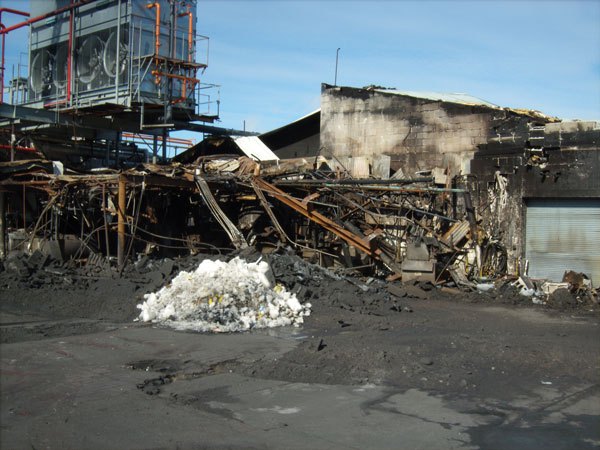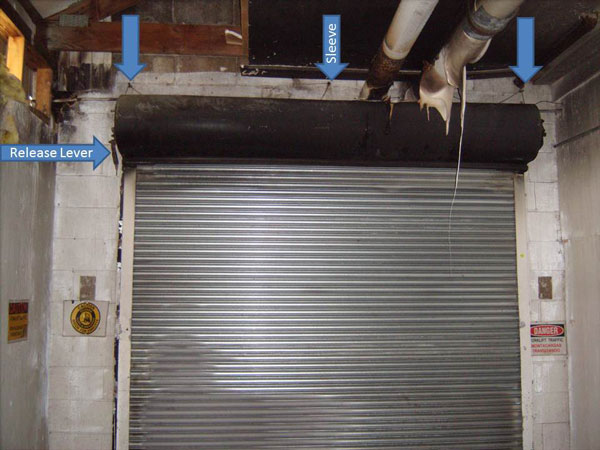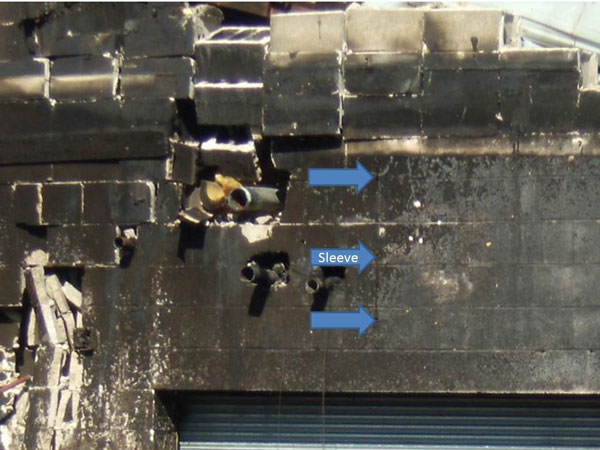by Gregory Havel
Photos by John Niederer
Fire-rated doors and walls are considered passive fire protection, and often get little publicity. When fire-rated doors do receive publicity, it is often because of a failure resulting from poor maintenance or from having been blocked open before the fire. Fortunately, these incidents are rare due to conscientious building and fire inspectors and the building owners and managers who maintain them as required by the building and fire codes, and by National Fire Protection Association (NFPA) Standard 80, Fire Doors and Other Opening Protectives.
Most building and fire codes require testing and listing of fire-rated doors by Underwriters Laboratories (UL) or another independent testing agency, according to NFPA Standard 252, Standard Methods of Fire Tests of Door Assemblies. This standard is also listed as UL 10B Fire Tests of Door Assemblies. Older fire door assemblies may have been tested to ASTM E-2074 Standard Test Method for Fire Tests of Door Assemblies, which was identical to the NFPA and UL standards at the time; and which was withdrawn by ASTM in 2007.
Fire-rated doors can provide a valuable line of defense for firefighters by separating:
- parts of a building that house hazardous processes or hazardous material storage from ordinary hazards;
- an older section of a building complex from a newer section;
- processing areas from warehousing;
- or a part of the building with automatic fire sprinklers from a part that has none.

Photo 1 shows a view of a food-processing plant in early 2013 after a fire destroyed more than half of the processing areas (in the center and left in the photo). The concrete block wall at the right center of the photo was rated as a two-hour wall and was sealed against the underside of the roof, as required by the building and fire codes. The vertical rolling fire door at the far right was rated at 1.5-hours. This wall and fire door separated a large production area, which was destroyed, from the boiler room and ammonia refrigeration plant, which were saved.

Photo 2 shows the fire-rated wall and door, which were damaged by the fire and the collapse of that part of the building after the fire was extinguished. While this wall and door allowed some smoke to enter the building on the other side of the wall, they prevented extension of the fire into the protected part of the building.

Photo 3 shows the fire-rated wall and door on the protected side after the fire was extinguished. Before the fire, this door had been held open by tension on small chains (arrows) and fusible links that were connected to the door’s release lever. When one of the fusible links melted, it released the tension on the chains, allowing the release lever to rotate and the door to close vertically.
The fire-rated wall and door were not protected on the unburned side by handlines. The incident commander chose not to risk personnel inside the plant at that time (and to trust the integrity of the fire-rated wall and door) since the plant had been completely evacuated by the time the first fire apparatus arrived, the building was very heavily involved in fire, and there was no direct route into that part of the plant for stretching a handline and no secondary exits in the area.

Photo 4 shows the chain and melted fusible link (arrows) on the side of the wall that was first exposed to fire. This chain passes through a steel sleeve in the masonry wall, and connects to the chains and fusible links on the protected side of the door, as shown in Photo 3.
Fire-rated doors and walls may be damaged and need replacement after a serious fire. The protection that they provide, even without the support of a handline, can mean the difference between the temporary relocation of a business or a process during reconstruction and permanent closing of the business. The food processing plant in the photos relocated some of its processes after the fire; is presently rebuilding; and expects to fully occupy the new building by the summer of 2015.
Download this article as a PDF HERE (533 KB).
RELATED FIREFIGHTER TRAINING
- THOUGHTS ON FIRE DOORS
- Fire Resistance of Doors
- Construction Concerns: Fire Doors
- Door Holders for Fire Doors
- MORE CONSTRUCTION CONCERNS
 Gregory Havel (at left). is a member of the town of Burlington (WI) Fire Department; retired deputy chief and training officer; and a 35-year veteran of the fire service. He is a Wisconsin-certified fire instructor II, fire officer II, and fire inspector; an adjunct instructor in fire service programs at Gateway Technical College; and safety director for Scherrer Construction Co., Inc. Havel has a bachelor’s degree from St. Norbert College; has more than 35 years of experience in facilities management and building construction; and has presented classes at FDIC.
Gregory Havel (at left). is a member of the town of Burlington (WI) Fire Department; retired deputy chief and training officer; and a 35-year veteran of the fire service. He is a Wisconsin-certified fire instructor II, fire officer II, and fire inspector; an adjunct instructor in fire service programs at Gateway Technical College; and safety director for Scherrer Construction Co., Inc. Havel has a bachelor’s degree from St. Norbert College; has more than 35 years of experience in facilities management and building construction; and has presented classes at FDIC.
John Niederer is a member of the city of Burlington (WI) Fire Department, training division chief, and fire inspector; and a 16-year veteran of the fire service. He is a Wisconsin-certified fire Instructor I, Fire Officer I, Driver-Operator, and Fire Inspector; and an adjunct instructor in fire service programs at Gateway Technical College.

